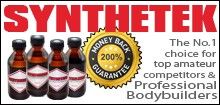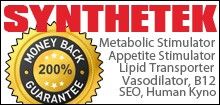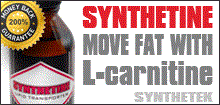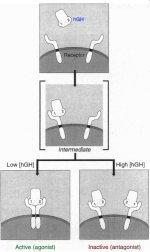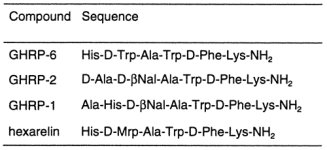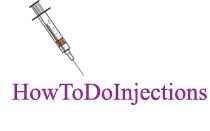- Joined
- Jul 25, 2008
- Messages
- 1,700
To expand on the subtle use of insulin here is a post I had over on AM a while ago that is interesting:
Dat - Adding to our knowledgebase
Insulin & GH act synergistically to produce IGF-1
As of 9/4/08 our knowledgebase possesses the understanding that GHRP-6 (and all GHRPs) increase GH for a 2 hour pulse and this usually (but not always) gives a rise in IGF-1 that is not sustained.
It also appears that the muscle IGF-1 isoforms are not increased.
For growth we need to get a sustained elevation of IGF-1 from somewhere (CJC-1295 or IGF-1/MGF itself) and hopefully this will be sufficient to stimulate localized muscle IGF-1 isoforms.
But when I was just using GHRP-6 several times a day I ran mini-cycles (around 21 days) of test/slin/GHRP-6 and I grew (beyond previous such cycles minus the GHRP-6). At the same time others claimed GHRP-6 did not add to their pursuit of muscle. Why the difference?
The difference might have been insulin.
And while one may argue that this is chickens & in vitro it is noteworthy that the following study treats this insulin/GH synergy almost as a given in humans and in vivo. See: Pharmacokinetics and acute lipolytic actions of growth hormone Impact of age, body composition, binding proteins, and other hormones, Troels Krarup Hansen, Growth Hormone & IGF Research 2002, 12, 342–358
So for the time being this gets added to the known benefits and synergistic actions between GH & insulin discussed in this thread.
Furthermore insulin might possibly be capable of providing the elevated IGF-1 needed with a standalone GHRP-6 protocol OR add to the elevated IGF-1 levels in a CJC-1295/GHRP-6 protocol.
Hmmmm....
Dat - Adding to our knowledgebase
Insulin & GH act synergistically to produce IGF-1
As of 9/4/08 our knowledgebase possesses the understanding that GHRP-6 (and all GHRPs) increase GH for a 2 hour pulse and this usually (but not always) gives a rise in IGF-1 that is not sustained.
It also appears that the muscle IGF-1 isoforms are not increased.
For growth we need to get a sustained elevation of IGF-1 from somewhere (CJC-1295 or IGF-1/MGF itself) and hopefully this will be sufficient to stimulate localized muscle IGF-1 isoforms.
But when I was just using GHRP-6 several times a day I ran mini-cycles (around 21 days) of test/slin/GHRP-6 and I grew (beyond previous such cycles minus the GHRP-6). At the same time others claimed GHRP-6 did not add to their pursuit of muscle. Why the difference?
The difference might have been insulin.
Insulin and growth hormone act synergistically to stimulate insulin-like growth factor-I production by cultured chicken hepatocytes, Houston B, O'Neill IE, J Endocrinol. 1991 Mar;128(3):389-93
Cultured chicken hepatocytes [i.e.workhorse liver cells] were used to investigate whether insulin and GH interact to regulate insulin-like growth factor-I (IGF-I) production in vitro. In the first set of experiments hepatocytes were preincubated for 6 h in hormone-free medium, and the effects of various combinations of insulin and GH on IGF-I production over the next 24 h were quantified by radioimmunoassay.
Basal IGF-I production was 5.36 pg IGF-I/micrograms DNA and this was increased 1.31 +/- 0.13-fold (mean +/- S.E.M.) by insulin, 1.90 +/- 0.24-fold by GH and 4.46 +/- 0.68-fold by a combination of insulin and GH.
These results demonstrate that insulin and GH interact synergistically to stimulate IGF-I production in vitro. The synergism with GH occurred at physiological concentrations of insulin with half-maximal stimulation occurring at an insulin concentration of 6 ng/ml. In hepatocytes which had been exposed to insulin immediately before the start of the experiment, the presence of insulin was no longer required for maximal stimulation of IGF-I production by GH.
Cultured chicken hepatocytes [i.e.workhorse liver cells] were used to investigate whether insulin and GH interact to regulate insulin-like growth factor-I (IGF-I) production in vitro. In the first set of experiments hepatocytes were preincubated for 6 h in hormone-free medium, and the effects of various combinations of insulin and GH on IGF-I production over the next 24 h were quantified by radioimmunoassay.
Basal IGF-I production was 5.36 pg IGF-I/micrograms DNA and this was increased 1.31 +/- 0.13-fold (mean +/- S.E.M.) by insulin, 1.90 +/- 0.24-fold by GH and 4.46 +/- 0.68-fold by a combination of insulin and GH.
These results demonstrate that insulin and GH interact synergistically to stimulate IGF-I production in vitro. The synergism with GH occurred at physiological concentrations of insulin with half-maximal stimulation occurring at an insulin concentration of 6 ng/ml. In hepatocytes which had been exposed to insulin immediately before the start of the experiment, the presence of insulin was no longer required for maximal stimulation of IGF-I production by GH.
And while one may argue that this is chickens & in vitro it is noteworthy that the following study treats this insulin/GH synergy almost as a given in humans and in vivo. See: Pharmacokinetics and acute lipolytic actions of growth hormone Impact of age, body composition, binding proteins, and other hormones, Troels Krarup Hansen, Growth Hormone & IGF Research 2002, 12, 342–358
So for the time being this gets added to the known benefits and synergistic actions between GH & insulin discussed in this thread.
Furthermore insulin might possibly be capable of providing the elevated IGF-1 needed with a standalone GHRP-6 protocol OR add to the elevated IGF-1 levels in a CJC-1295/GHRP-6 protocol.
Hmmmm....

